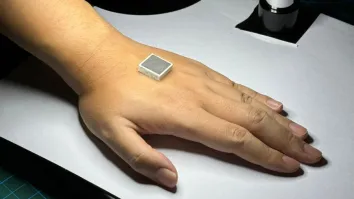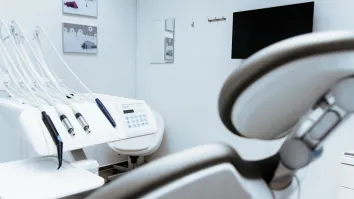How AI technology is defining the future of Asia’s hospitals
By Zhang ShaotingThe ongoing COVID-19 pandemic has witnessed significant pressure on hospitals amid a shortage of staff and medical support, not to mention the travel restrictions that have created unprecedented challenges to mobility.
Yet it is under adversity that digital transformation in the healthcare sector is fostering evolution. We have seen the rapid rise of smart hospitals that harness AI technology to boost patient outcomes, reduce the workload of medical professionals and improve operational efficiency.
Using technology to improve clinical efficiency is especially important in Asia given the comparatively low doctor-to-population ratios. In 2019, there was an average of 2.84 doctors per 1,000 people across G7 countries, compared with 2.46 in Korea, 2.24 in China and just 0.93 in India according to the OECD. With the pandemic limiting opportunities for medical tourism, hospitals are under even larger pressure to enable residents to access high-quality and efficient medical services locally.
To better serve the increased number of residents that turn to local hospitals for medical services, Kiang Wu Hospital in Macau has been harnessing AI technology to handle the doubled appointments during the pandemic. For example, the complex and labour-intensive 3D reconstruction of coronary arteries can be fully automated with high precision, allowing doctors to allocate more time to conducting the diagnosis. The adoption of AI in Lung CT images for early-stage diagnoses also helped Kiang Wu maintain workflow efficiency during the COVID-19 outbreak while reducing report generation time by 31%.
Another area of accelerated investment is telemedicine – digitalized services and remote consultations for patients, which have been particularly pronounced under social distancing measures. For example, an AI-powered chatbot can help patients check their symptoms, get relevant health information and engage with doctors virtually 24/7, minimizing the risk of cross-infection during visits to crowded hospitals. The rise in 5G connectivity, IoT and wearables are also facilitating telemedicine with preventive health monitoring and emergency response, enabling doctors to engage with patients timelier.
While this has helped alleviate some of the pressure, a face-to-face visit to doctors remains important. Therefore, for hospitals, it’s crucial to optimize operations and management in its buildings to streamline outpatient experience, including an intelligent appointment system, smart temperature screening at entrances and AR navigation inside the hospital, which not only reduce the queuing time for patients but also lighten the workload for medical staff.
With a quarter across Asia expected to be over 60 by 2050 according to the United Nations, the ageing population also aggravates the challenges faced with many healthcare systems. One consideration is the reduced mobility of elderly people, especially in China where people outside of major cities may be some distance away from their nearest major hospital. We are beginning to see the scope of healthcare expand through a decentralized model in the country, where medical institutions are digitally connected to provide remote diagnostics and care services.
Ruijin Hospital in Shanghai is one of the highest-rated institutions in China with multiple branches. With an AI-powered platform, the very limited number of pathologists at the Luwan branch can now handle simple cases more efficiently. Meanwhile, complex cases can be sent to experts from Ruijin’s HQ in digitalized formats for remote diagnosis. AI-assisted tools also facilitate Ruijin’s North branch, one of Shanghai’s designated hospitals for COVID-19 to collaborate with HQ to improve screening and diagnostic efficiency to keep up with testing demands. Facilitated by AI and 5G, top-tier hospitals like Ruijin will be able to support its branches or its partner hospitals remotely to reduce workload and elevate healthcare quality, contributing to a hierarchical medical system and better allocation of medical resources.
Asia’s ageing population is an inevitable trajectory and ensuring a sustainable healthcare system is a policy directive for most countries. The rising adoption of emerging technologies is offering a means to facilitate universal health coverage and ensure patient-centric healthcare. As the likes of AI continue to advance, we can expect to see technology play an even more important and novel role in empowering healthcare in the region, and improve people’s livelihoods toward the “Tech for Good” goal.


















 Advertise
Advertise





